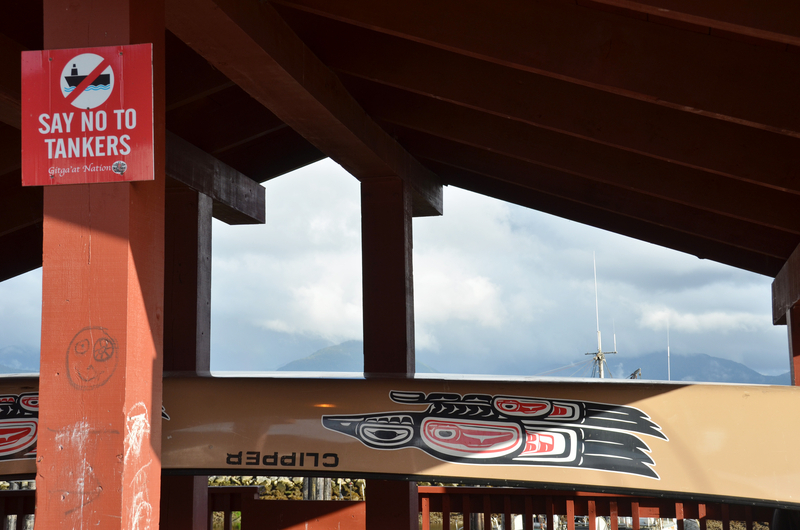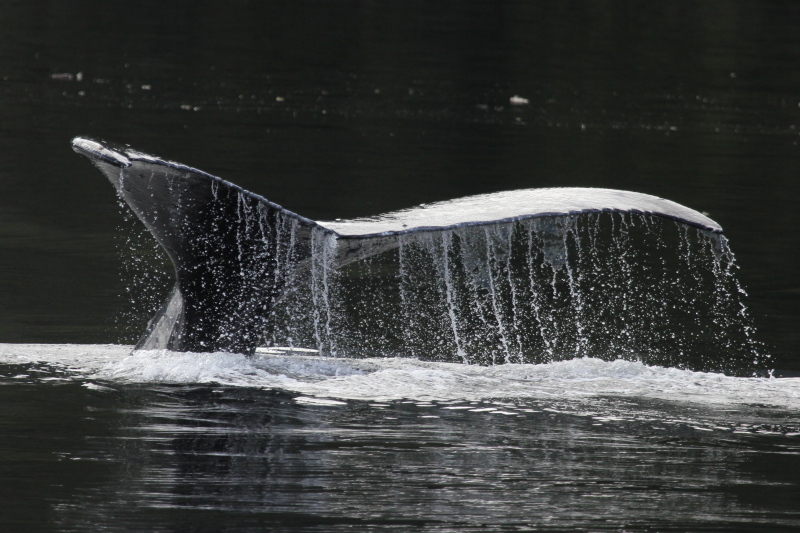Why a city’s symbolic vote on Northern Gateway matters
Kitimat, situated at the heart of the proposed Enbridge Northern Gateway oil pipeline project, is holding a municipal vote this week on the recommendation to green-light the project. Why it is happening and why Enbridge is so involved are two good questions. Why this matters to you, is a third.
The Question: Do you support the final report recommendations of the Joint Review Panel (JRP) of the Canadian Environmental Assessment Agency and National Energy Board, that the Enbridge Northern Gateway project be approved, subject to 209 conditions set out in Volume 2 of the JRP’s final report?
This week, a community of less than 10,000 people will participate in a non-binding municipal vote on the Joint Review Panel’s decision to green-light Enbridge’s Northern Gateway oil pipeline project with conditions.

© Steph Morgan / WWF-Canada
This is happening months after the consultation process and will not alter the regulatory path for the project. Local governments of neighbouring communities, First Nations governments, and both provincial and federally elected representatives are all on the record opposing the pipeline. So why does this “symbolic” vote matter? Better yet, why does it matter so much to Enbridge?
The company has been pouring significant money into a ‘vote yes’ campaign, including a bombardment of signage, door-to-door canvassers, a video campaign and full-page ads in communities throughout Northwest BC.
While tremendous resources are being poured into swaying how the community will vote, what’s not happening is equal effort to inform them, either about how the Joint Review Panel (JRP) came to its conclusions or what their 209 conditions really mean.

The 417 page report is not exactly a fun, easy read. But our federal government is about to rely on it to make one of our country’s biggest development decisions—so people deserve to understand it. Unfortunately, the report raises more questions than it does answers. Questions that the City of Kitimat—and Canadians more broadly—have the right to ask.
Questions such as:
Should we understand the risks of a bitumen spill before we decide whether to allow such a project?
One would hope so. But that didn’t happen.
The JRP urged approval despite not having enough credible science to understand that risk. It recommended research be done, but those research results will come too late to inform the decision. And the research that was presented – by the Province of British Columbia – clearly showed that an oil tanker spill would be a disaster, even if we were able to reach the best standards in the world. This ‘leap first, look second’ approach could place our environment in serious danger.
Should we allow a project to put vulnerable species at greater risk?
Most of us would say that every effort should be made not to. But that’s not the case here.
The JRP knew that they needed better information about the impact of this project on threatened humpback whales. Specifically, they needed to understand whether whale populations might decline because of threats like ship strikes and increased ocean noise. But they decided to go forward with their recommendation anyway, hoping that unproven measures proposed by Enbridge would be good enough.

The JRP also admitted there would be significant cumulative effects to threatened Woodland Caribou and grizzly bears. The pipeline will cross the range of the Little Smoky herd, which is at serious risk of being wiped out. The case for caribou is dire, even without this kind of major construction project that would destroy habitat and create corridors increasing access for predators and hunters. Grizzly bears, a species of special concern under the Committee on the Status of Endangered Wildlife in Canada, COSEWIC, whose numbers are also in local decline, will be subjected to habitat loss, vehicle strikes and increased hunting.
The JRP also identified adverse effects to a number of species on the brink of extinction, including the endangered blue, sei and North Pacific right whales, white sturgeon and the Northern leopard frog. In the past, significant cumulative impacts on vulnerable species would have been a hard stop for a project under environmental assessment. The JRP, however, dismissed the responsibility to safeguard the future of these species by stating the impacts are “justified in the circumstances”. Has so much changed that we are willing to put a price on the existence of these iconic species?
In reality, the entire web of coastal marine and terrestrial life – from rare sponge reefs to migrating salmon to marine and terrestrial mammals – would be severely impacted by the construction of the pipeline, not to mention a major accident. Devastated as well would be the people, culture and economy that relies on a resilient coastal environment.

Should we be building pipelines without considering the impact they have on climate change?
Given all we currently know, it’s hard to imagine how we could. But we are.
This project has clear implications for Canada’s carbon emissions, which simply weren’t considered by the JRP. Even if the findings of the world’s top scientists aren’t compelling us to pay attention to this issue, the fact that one of our main trade partners—the US—is, should be. President Obama’s insistence that climate impacts are central to the Keystone pipeline decision is a wake-up call for this and all energy infrastructure projects we undertake.
What does this mean?
These are some of the questions facing the people of Kitimat as they cast their vote. They are also questions that matter to all Canadians—and they go beyond just the Northern Gateway decision. Ultimately, this is about whether Canada’s current approach to conditioning the approval of a major development project protects Canadian values, like support for our wonderful nature. Does it uphold the value we place on building a healthy economy that is rooted in a healthy environment? Does it support our aspirations for the country we want to live in and pass on to our children?
The Kitimat vote, and Enbridge’s efforts to sway it, is a reminder that massive projects, which pose real risks to the environment and society, should not proceed without the approval of well-informed citizens. That means, these projects don’t only have to pass the JRP’s test or the federal government’s—they have to pass all of ours, too.
